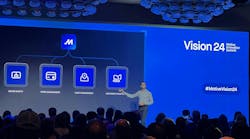Back in 1994, when I first started writing about the Internet and its possibilities, it was still common for companies to go on record as taking a “wait and see” attitude toward the Worldwide Web. Who really knew if it was a fad, a tool of use only to the scientific and academic communities, or something with practical business applications?
As it turned out, we did not have to wait very long to see a whole new world unfolding right before our eyes, and it continues to unfold today. If you want to take a quick peek at what marvels may be just ahead, pick up a copy of the September/October issue of MIT's Technology Review (www.technologyreview.com) and take a look at their “Young Innovators Under 35” list for 2006. My bet is that it won't be long before many of their projects become our everyday tools.
Thirty-two-year old Joshua Schachter's original idea, called “Del.icio.us,” for example, has already become a part of the Internet (it was recently sold to Yahoo). It is a tagging and searching tool that grows and changes organically over time because it is based upon the input of all its users. Each person who uses the system and creates his or her own bookmarks or “tags” for an Internet page contributes new links, new paths to information. As the relevance of pages evolve over time, so do the tags. In other words, my “odd inventions” tag may be someone else's “amazing boat-truck” bookmark, or today's “alternative power” may become tomorrow's “aftermarket fuel cells.”
Another 32-year old computer scientist at Mitsubishi Electric Research Lab, Paris Smaragdis, is working on “machine listening” systems, according to Technology Review, that use sound to monitor machinery for impending breakdowns or activate traffic cameras to record accidents. (You can hear about this for yourself at www.technologyreview.com/TR35/parissmaragdis.aspx).
Meanwhile, at the University of Athens, Apostolos Argyris is busy at work on a data encryption method that is considered to be nearly unbreakable. Using a technology dubbed “chaotic synchronization” (I am not making this up), he disguises messages as white noise that can still be clearly understood when they reach the receiver on the other end.
Apparently, this magical transformation and retransformation is accomplished by “combining a digital message with a chaotic, rapidly fluctuating laser signal; the chaotic signal's irregular shape masks the message and allows it to evade standard eavesdropping methods. An identically generated chaotic signal on the receiving end cancels out the first, leaving only the original data.” Got that? For the most sensitive communications, however, say about the route a truck carrying radioactive waste or toxic chemicals will take, this additional security on top of existing software encryption tools might offer a welcome layer of extra safety and peace of mind.
There is more, much more, to marvel at in just the MIT list alone: from a floppy plastic computer display that you might be able to just roll up and shove into a pocket, to better “virtual” crash test dummies and software that could allow drivers to point at icons on the dashboard to turn functions on or off rather than flipping switches or turning dials.
All these ideas and the vision and energy behind them are both inspiring and humbling. Just when it seemed as though we had entered a much more “mature” stage of Internet technology understanding and daily use, something like MIT's young innovator's list comes along as a vivid reminder that we are still at the “wait and see” point after all.


